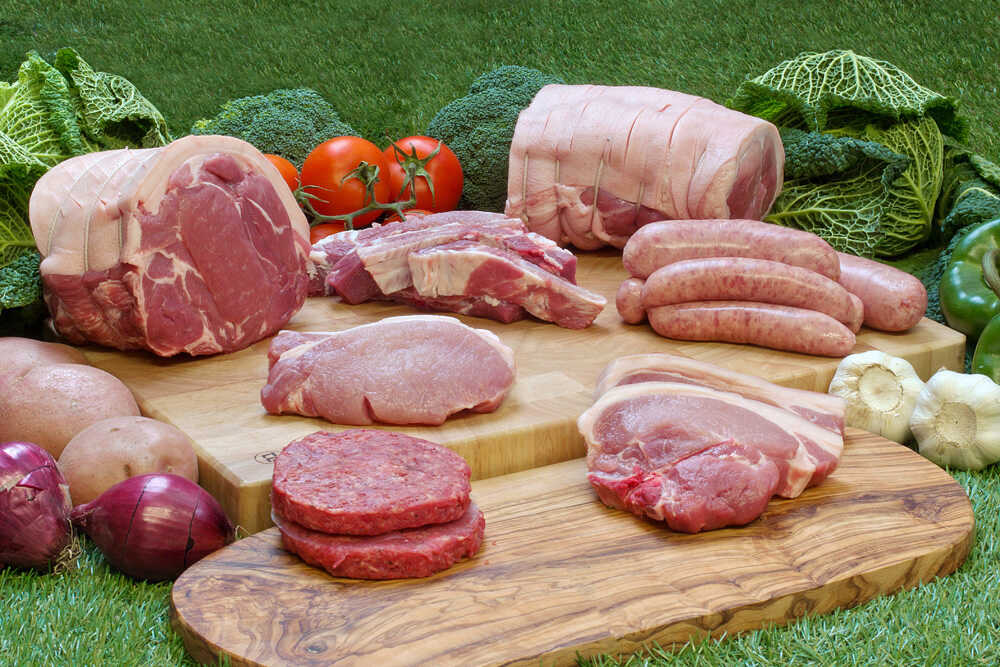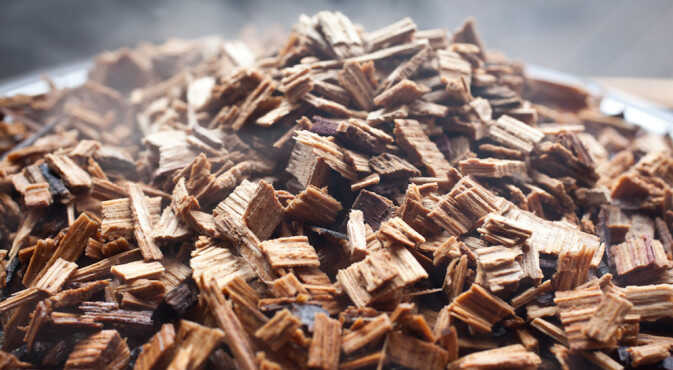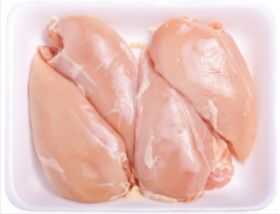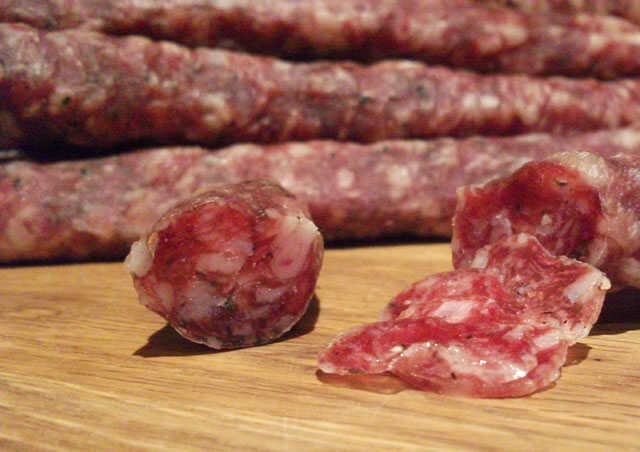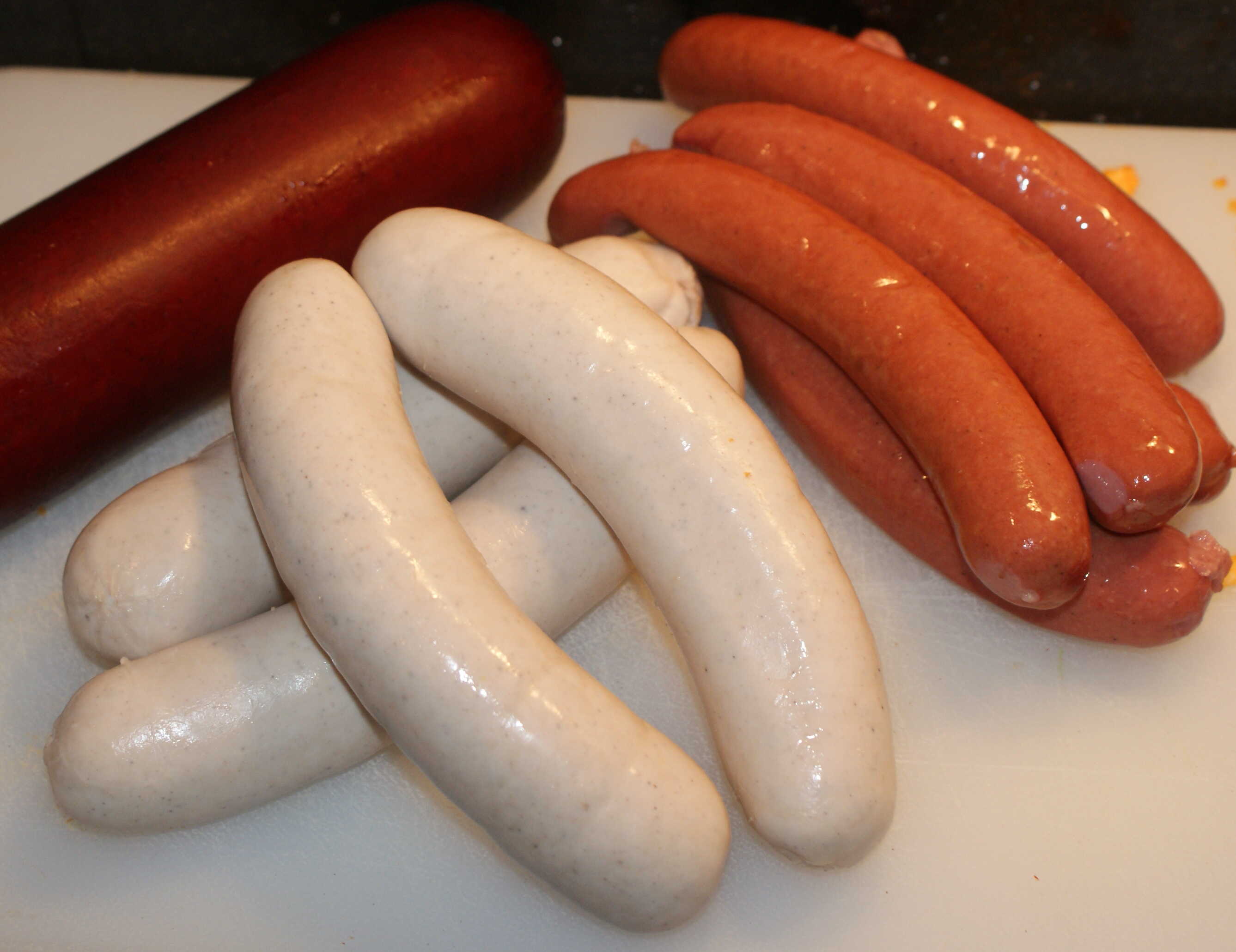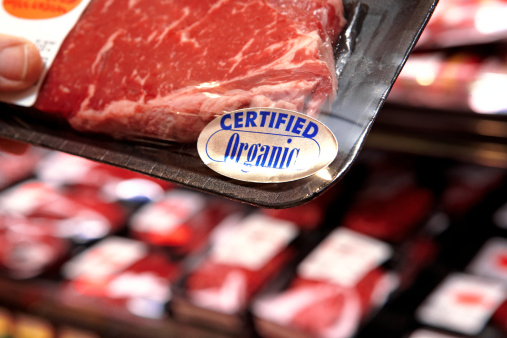
Natural casings / natural casings
Natural casings, commonly called natural casings, are products that have been used in the production of sausages for centuries. its function remained practically unchanged in terms of its appearance and artisanal composition.
Natural casings, which are made from parts of the animal's digestive tract, such as the small intestine, large intestine, bladder and esophagus, are treated to remove external fat and the internal mucosal lining. The natural casings are resistant and withstand the pressure to enclose the meat mass; are permeable to water vapor, gases and smoke; They are elastic and adhere easily when filling sausages, as well as when closing these products later. Natural casings can be dried and salted, and are suitable for filling artisanal, fermented, organic or low production demand sausages. This type of casing is mainly used on fresh sausages and bratwurst, Frankfurter and Viennese sausages.
See this other post for a comparative table between the types of casings for sausages.
Artificial casings/artificial casings
Artificial casings, also known as artificial casings, emerged in the 20th century, when, in some countries, the production capacity for natural casings was exceeded. Over time, filling machines were developed that adapted to the requirements of these systems, especially with regard to obtaining uniformity in the casings. Artificial casings are classified according to their structure and composition and can be made from natural or artificial raw materials, made from synthetic material such as cellulose, edible collagen, non-edible collagen and plastic or synthetic material.
Artificial cellulose casings or artificial cellulose casings They are of plant origin and can be obtained from wood or cotton. This type of casing requires it to be submerged in hot water for thirty minutes before being used. Due to its high mechanical resistance and the adaptability of its volume (it expands when immersed in water; and, when drying the surface of the sausages, it does not create creases), it is very suitable for large diameter sausages. Artificial casings have important properties for certain products, such as impermeability to gases, smoke and water vapor. They are widely used in the manufacture of large-scale hot dog sausages.
Collagen wraps or artificial collagen casings emerged around 50 years ago, and their presence has been increasing. These casings are of animal origin and are derived from connective tissue, mainly from the skin, bones and tendons of cattle, pigs and, in some cases, chickens. Collagen casings are permeable to smoke and water vapor. Casings with small, thin diameters are made of edible collagen, and those with larger, thick diameters of 40 mm or more are made of inedible collagen. Collagen casings are typically most commonly used on fresh, raw sausages.
You plastic wraps or plastic artificial casings They are extracted from synthetic products and can be flat or wrinkled. They are made from polymers, such as polyamides, polypropylene or polyethylene. Nylon or Saran wrappers (trade name for polymers made with vinylidene chloride, together with other monomers) are the most common in the processing of cooked sausages such as mortadella and ham. They can be made with oriented or non-oriented polyamides. Oriented polyamides are shells that can wrinkle during the baking treatment, therefore a reduction in volume occurs due to water loss. Non-oriented ones maintain the same diameter during processing because they allow the meat to expand during cooking; They are highly impermeable to gases and water vapor and cannot be used in sausages that require drying, maturation or fermentation processes.
ADVANTAGES AND DISADVANTAGES OF NATURAL AND ARTIFICIAL CASINGS
Natural casings or natural casings
Some of benefits of natural casings or casings are:
- sufficient strength to withstand high pressures during embedding;
- high permeability to water vapor, gases and smoke;
- elasticity and firm adherence to the mixture;
- more pleasant texture, better bite;
- ease of embedding and manipulation;
- lack of uniformity in diameter can bring a different artisanal appearance;
- They are edible, have good digestion and are soft in the mouth.
Some of disadvantages of natural casings or casings are:
- They are not resistant to breakage;
- have lower yields as they are comparatively more expensive.
- Depending on the product, the low uniformity of natural casings can be a disadvantage.
- They require removal of layers of intestinal lining increasing impermeability and flexibility, but reducing chemical resistance.
- They need to be processed immediately after slaughter to avoid microbial decomposition.
- Natural casings or casings cannot be frozen as they lose their elasticity and consistency.
- Because they are wrappers of animal origin, they already come with a certain microbial load, including pathogens such as Salmonella spp, Steprococci, Enterobacteriaceae, viruses, coliform bacteria and Clostridia, and are likely to be Listeria repositories during processing.
- High fat content present on its outer surface, making it easily rancid if the fat is not completely removed during salting.
Storage time depends on temperature:
- above 15°C it lasts up to 3 months;
- between 6°C and 8°C it lasts up to 3 years.
The storage period may be affected if intestinal fat is present.
Collagen casings or artificial collagen casings
Some of benefits of artificial collagen casings or casings are:
- Artificial collagen casings require less labor and processing
- are more economical;
- provide better weights, more size control;
- easier to handle, in terms of production, than natural ones;
- Uniform diameter and mechanical strength;
- can be used without being previously moistened with water.
Some of disadvantages of artificial collagen casings or casings are:
- they lose in texture to the natural casing;
- are very sensitive to humidity, especially during cooking and smoking; wet collagen becomes soft and prone to breakage, while dry collagen becomes rigid and impermeable; This is why collagen casings must be processed in a dry environment to make them strong.
- Regenerative collagen casings shrink easily, become fragile and are dry packed (without salt or brine solutions) and can be stored for a long period of time.
Synthetic casings or synthetic casings
Some of benefits of synthetic casings or casings are:
An advantage of synthetic casings is that they can be used to enclose a huge variety of processed meat products, depending on what you have in mind.
Some of disadvantages of artificial collagen casings or casings are:
Because they are made from PVDC (polyvinylidene chloride), they contain phthalates (used to make the plastic more malleable) and pose risks to the endocrine system, especially in children.


